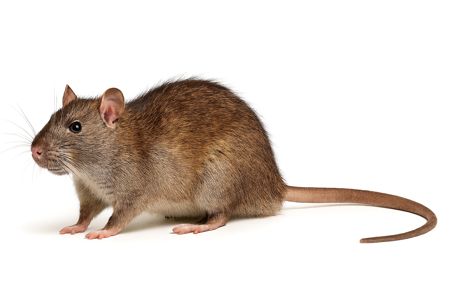This is an opinion-forward, local education piece for Treasure Valley homeowners and facility managers. Over the past few seasons, rat activity has expanded from pockets of Eagle into Boise neighborhoods and commercial corridors, with community meetings and news coverage documenting roof-rat detections and growing public concern. KTVB+1
What’s showing up here
- Norway rats (heavier-bodied, blunt nose, small ears, tail shorter than body) tend to burrow along foundations, fences, and under sheds. Roof rats (slimmer, pointed nose, large ears, tail as long or longer than body) prefer elevated travel and nesting sites like fruit trees, vines, soffits, and attics—exactly what Eagle and Boise neighborhoods have reported. KTVB+1
Why Boise is seeing more rats
- Concentrated food sources: backyard chickens, bird seed, pet bowls, unsealed feed, and open dumpsters amplify urban rat pressure—issues flagged in local notices and meetings. Garden City Idaho+1
- Mild winters + lush landscaping: irrigation corridors, greenbelts, and dense groundcover give year-round harborage, aligning with recent local reports. Spokesman-Review
- Construction & infill: ground disturbance pushes rodents to adjacent structures until sites “settle,” a familiar theme in Treasure Valley coverage. Spokesman-Review
Clear signs to look for
- Droppings: capsule-shaped (½–¾ inch for Norway rats), slightly smaller/pointed for roof rats. CDC
- Gnawing & holes: fresh tooth marks on bins/wood and 2–3 inch ground openings with hard-packed “runways.” CDC
- Grease rubs & tracks: dark smears along baseboards/pipes/rafters; dusty footprints and tail swipes. CDC
- Noises & pet alerts: nocturnal scurrying in walls/ceilings; pets fixating on fence lines or sheds—mirroring local resident reports. Spokesman-Review
- Burrows & nests: soil heave under slabs, voids behind vines, shredded paper/insulation in garages or attics. CDC
- Utility intrusions: gaps at garage doors, AC lines, conduit, crawl-space vents ≥¼ inch. CDC
Exterior solutions (ground-level, Norway-rat biased)
- Sanitation first: lock trash lids; remove/secure bird feeders; store chicken, pet, and lawn seed in metal bins; harvest fruit; clean grills; fix irrigation leaks—core public-health guidance. CDC
- Landscape edits: thin ivy, lift shrubs 6–8 inches above soil, prune fruit trees to keep branches 3–4 feet from roofs/fences; elevate wood/brick piles. CDC
- Exclusion & proofing: install ¼-inch hardware cloth on crawl vents; add heavy-duty door sweeps; screen weep holes; seal utility penetrations with metal mesh and mortar. National Park Service
- Burrow response: collapse inactive burrows and use perimeter stone/gravel to deter re-digging. National Park Service
- Trapping: run multiple covered snap traps or secured stations along exterior travel routes (fence lines, between harborage and food). Pre-bait 24–48 hours to increase take. CDC
- Responsible baiting: where appropriate, use tamper-resistant stations placed away from children, pets, and wildlife; mechanical controls should lead. CDC
Interior & overhead solutions (attics/garages, roof-rat biased)
- Find the entry: daylight test at door bottoms; smoke-pencil or flour-dust along wall-void gaps; inspect soffits and roof penetrations—common pathways highlighted in local advisories. Garden City Idaho
- Seal then trap: close active openings ≥¼ inch with metal mesh + sealant, then run an intensive snap-trap program for 10–14 days along runways, rafters, and wall bases. National Park Service
- Attic/garage controls: traps on secured boards across joists; multi-catch traps along wall-top “highways”; avoid long-term food storage in attics. CDC
- Odor & bio cleanup: remove carcasses/droppings with PPE; HEPA vacuum and disinfect affected areas to reduce health risk. CDC
- Monitoring: non-toxic tracking blocks and regular inspections in sensitive facilities (food service, healthcare, schools) to catch rebounds early. CDC
By setting expectations
- Expect multiple visits: exterior populations typically require several service intervals to break reproduction cycles—consistent with integrated “clean up, seal up, trap up” practice. Philippine Health Insurance Corporation
- Proofing pays for itself: long-term success tracks directly to exclusion quality—steel, mesh, concrete and good doors beat bait every time. National Park Service
- Neighborhood effect: community-level sanitation (dumpster lids, shared fruit cleanup, coop/feed practices) reduces reinvasion—echoed in local city guidance. Garden City Idaho
When to act now
- Fresh droppings or grease marks indoors. CDC
- New burrows near AC pads, decks, or compost areas. CDC
- Night noises in ceilings or pets fixated on a single fence line, with neighbors confirming catches or recent sightings. Spokesman-Review
Boise-area quick checklist
□ Lock trash/organics; no overnight pet bowls outside. CDC
□ Metal bins for feed/seed; harvest fruit promptly. CDC
□ Prune trees and lift shrubs; remove ground cover hugging foundations. CDC
□ Seal ¼-inch gaps at doors/vents/utilities with metal + mortar. National Park Service
□ Run a 10–14 day trap campaign; evaluate weekly and reset as needed. CDC
□ Coordinate with neighbors/property managers and follow city guidance. Garden City Idaho
Sources
- KTVB: “Invasive rat species found in Treasure Valley” (roof rats growing in Eagle). KTVB
- Spokesman-Review: “Rats are spreading through the Treasure Valley… now Boise too,” Nov. 29, 2024. Spokesman-Review
- City of Garden City: “Norway Rats” community notice and safety tips. Garden City Idaho
- CDC: Rodent control and health guidance (“clean up, seal up, trap up”). CDC

